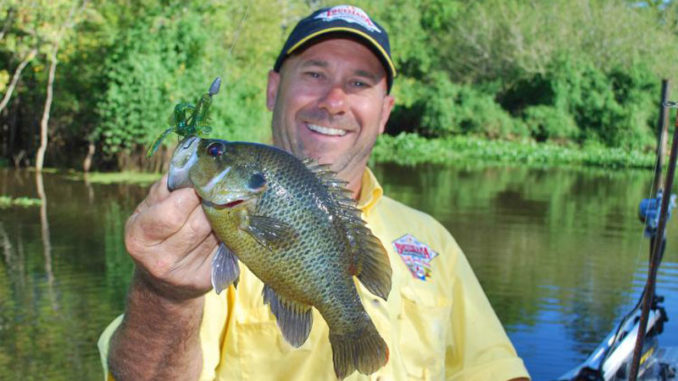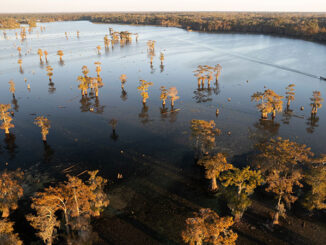
While many factors come into play in successfully fishing the Atchafalaya Basin, what the Atchafalaya River is doing dominates decisions on whether and where to go fishing.
Two things are important: the level of the river and whether it is falling, rising or at a standstill.
Like pretty much everybody who fishes the vast swamp, John Langlois is a river-gauge watcher.
Unlike many, though, he doesn’t monitor the Butte Larose gauge. Instead, he favors the gauge at Krotz Springs.
“The best fishing starts at 14 feet and falling,” Langlois said. “It’s prime for everything. By about 10 feet, activity slows for sac-a-lait. I feel that a lot of them hang in deeper water as the water becomes more stagnant and hotter.
“But it’s still good for bluegill, goggle-eye and bass. That holds until I start to prep for hunting season.”
Water color is important in fishing the Basin, as well.
“Look for water that’s not muddy but not black-clear,” Langlois explained. “I like in between green to milky root beer color.
“Don’t shy away from murky water; I’ve caught a lot of fish in murky water.”
Fish just don’t bite well in muddy water, he said, and black-clear water holds no oxygen and hence no fish.
Timing-wise, Langlois stressed the best fishing occurs after receding water levels have exposed bayou and canal banks, a common indicator of where to fish for experienced Atchafalaya hands.
“I love to fish cloudy days, too,” Langlois added. “When it’s real clear, hot and still, the fish can almost quit biting in the middle of the day.
“When it gets breezy and cloudy, they start biting.”
